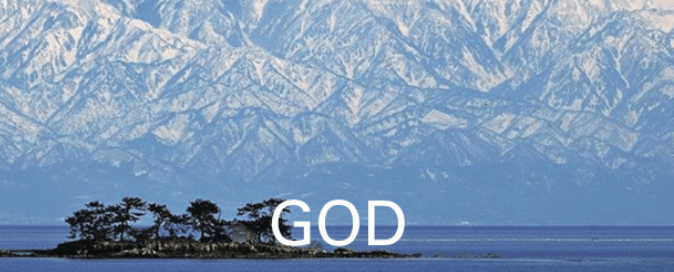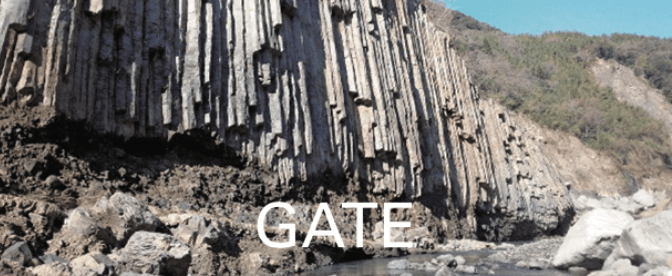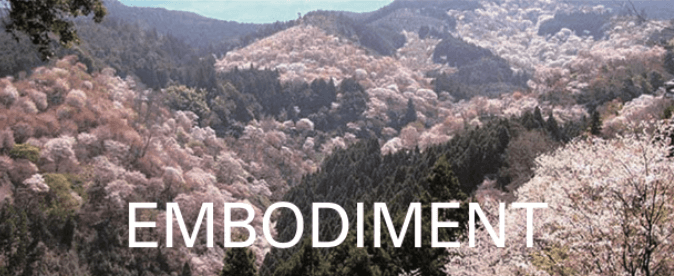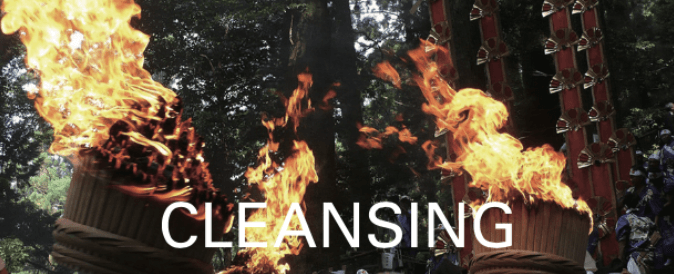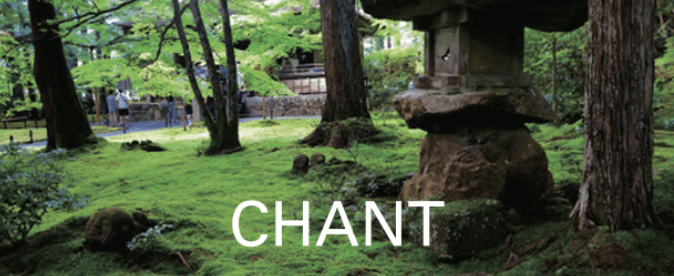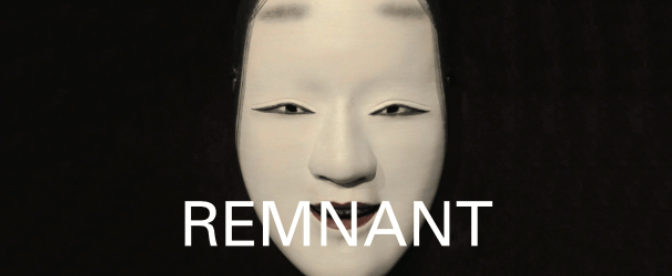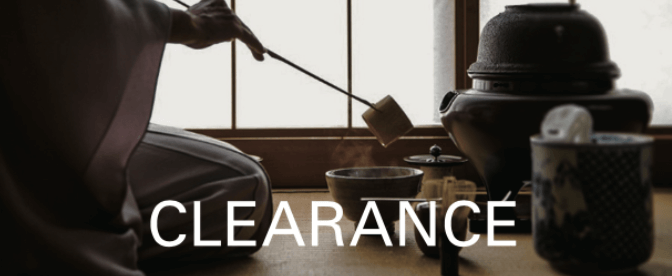
The Ikoma Mountains, rose up from Osaka Ikoma fault zone 1.2 million years ago. The alluvial fan was formed in Kawachi bay, existed since ancient times in Osaka city. The Ikoma Mountains brought grace was Kannabi, a holy mountain. It is said that En no Gyojya (Born 634): a Japanese ascetic and the founder of Shugendo, began the tradition of priests practicing and seeking spiritual enlightenment at the mountains.
Kobo Daishi Kukai (774 – 835), the founder of the Shingon sect, also practiced at the mountains. This cable located on the mountains, connects Honzanji Temple from the Torii, a gate at the entrance to a shrine, in 5 minutes.
The shrine enshrines Kankiten, a god of joy and business. Many people visited here during the Edo period (1603 – 1868). You can easily experience Ikoma, the mountain of grace.
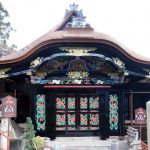
—A major repair to restore the splendor decoration of the Karamon Gate ended in May 2020.
The National Treasure Karamon Gate is made with Hiwadabuki, cypress bark roof. This gate was the relocated Gokurakumon gate, from Toyokunibyo in Higashiyama Kyoto, in the rebuilding of this temple by Toyotomi Hideyori (1593 – 1615): the son of Toyotomi Hideyoshi, in 1603.
It was part of a mausoleum dedicated to Toyotomi Hideyoshi (1537 – 1598): the powerful feudal lord and Imperial Regent who unified Japan. The splendor decorated with richly colored sculptures and metal fittings was a typical relic of Karamon Gate in the style of the Azuchi-Momoyama period (1573 – 1603).
It was also pointed out that it was originally part of the Gokurakubashi bridge, which crossed a moat at the north side of the Osakajo Castle keep. It was described as a distinguished and shining golden bridge. That means that this gate is also the only remains of Osakajo Castle tower, by Hideyoshi.
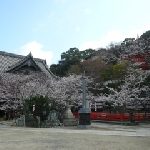
This temple is facing WaKanoura Bay, where poems about the scenery have been written since ancient times. You arrive at it after climbing 231 steep stone steps up Mt. Nagusayama.
This temple was founded in the Nara period (710 – 794), by Iko Shonin, a priest of the Tang Dynasty, when he saw the spiritual light and realized Senju Kannon, the Buddhist Goddess of Mercy with a 1000 arms, at this mountain. Since the founding, the successive emperors had visited and this temple has prospered. This temple name means the temple with three sacred wells. The clear water still springs from those wells.
This main temple has Karahafu, a type of cusped gable. In front of it is Kyu-Ma, Shi-Men, a building that is 16.4m wide and 3.6m deep, with 4 eaves of 3.6m long, made of zelkova wood. This building and architecture show the strong worship at this temple, by the Wakayama Domain, in the Edo period (1603 – 1868).
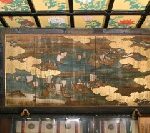
Hakusan shrine in Niigata City is the shrine of Sochinju, the central place to pray for local gods in Niigata. Niigata harbor used to the largest port of call to Kitamae-bune, cargo ships that sailed the Japanese Sea during the Edo period (1603-1868). The Ema, the votive picture of a horse, dedicated to the shrine frequented by those on the Kitamae-bune, reminds us of the prosperity of Niigata harbor. This shrine enshrines Hakusan Okami, Kukurihime no mikoto as the main enshrined deity, a goddess transferred from the sacred peak, Mt. Hakusan(2702m) in Kaga, Ishikawa. Kukurihime no mikoto has the power to bring harmony and connection to confused situations.
Uesugi clan repeatedly fought with Shibata clan in the Age of Provincial Wars, in the 17th century. Hakusan Okami was enshrined in the castle of Shibata clan. It was said at this shrine that the Uesugi clan dedicated the mirror and ceremonial folding fan to the Hakusan shrine on the way home from its victory.
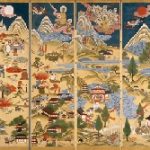
The praying shrine of this shrine stays in a cedar grove of 500 years old, with full solemnity. The main shrine is located at the top of Mt. Oyama in the altitude of 3003 m. The Tateyama mountain range, of which Mt. Oyama belongs, rises to the earth, like connecting heaven and earth.
You can experience there what Japanese people looked up to from the ancient days. In addition, you can realize the history of the 1300 years of Japanese mountain asceticism, by looking at the Tateyama Mandala and valued cultural properties, related to the Tateyama Belief, at Toyama Prefecture Tateyama Museum next to this shrine.
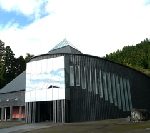
This museum is located at Ashikuraji at the foot of the Tateyama Mountain Range. The museum display consists of a philosophical exhibition, where you can experience the idea of the Tateyama Belief, through a diorama, and a structure exhibition that you can visually understand, with videos and others. This museum’s exhibits convey the history of 1300 years of the Tateyama Belief and Shugendo: Japanese mountain ascetic practices, valuable cultural assets related to the Tateyama Belief, including the Tateyama Mandala, which depicts scenes of Buddhist paradise and hell, sightseeing spots and stories of the region, by which people could understand the world of Tateyama Belief, even if people could not climb the mountain.
This museum also introduces a simple view of nature that is in awe of the mountains, which are the source of water, fuel and other living resources, before Shugendo.
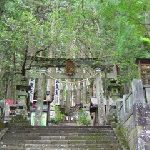
Mt. Ontakesan’s (3067m) highest peak, Mt. Kengamine, the rim of a volcano, has been worshiped as a holy mountain, since it was found in the 7th century.
In the Muromachi period of the 14th- 16th centuries, many mountain ascetics began pilgrimages to Mt. Ontakesan. This shrine has shrines in various places, from the Satomiya shrine at the base of a hill to the rea shrine at the top of Mt. Ontakesan. The rea shrine is open until early September.
You can go to Otakiguchi Tanohara (2160m) by car, which is the seventh station of Mt. Ontakesan. You, too, can experience the awe-inspiring greatness of this place.
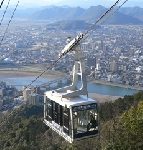
The area around Mt. Kinkazan overlooking the Nagara River was the sea, a long long time ago. It became a Rocky Mountain, with a steep grade, due to the long-term, crustal deformation. Currently, there are about 700 species of plants and 60 species of birds. You can feel the nature that remains from ancient times on the ropeway, and enjoy the spirit of Oda Nobunaga (1534 – 1582), the lord of this mountain castle, from the top of the mountain that controls the Mino domain.
He believed that the lord who controls Mino, controls Japan. Japanese style Painter Kawai Gyokudo (1873-1957) who painted Roshou Soyo, Old Pine Tree and Goshawk, loved the Nagara River and drew it in many his paintings.
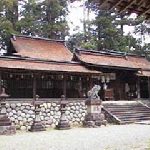
This shrine facing the Nagara River is wrapped in the sacred grove of the village shrine, which has plants favoring the warm climate in Mt. Tsurugata (348m). This shrine building is splendid and it is said to have been founded by a distinguished priest, Taicho Daishi (682 – 767), Great Priest.
This shrine is Maemiya, the front shrine of Mt. Hakusan Worship. It was said that each day there were one thousand worshippers who climbed Mt. Hakusan and one thousand worshippers who descended. This shrine was used by the 2nd Shogun of the Tokugawa shogunate to pray for recovery from illness. The successive shoguns of the Tokugawa shogunate devoutly worshiped this shrine.
This shrine has handed down the history of praying for Gokokuhojyo, a bumper crop, a huge harvest in the territory, every year, as one of ten purveying shinto priest clans to the feudal domain of Owari Tokugawa.
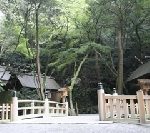
Mt. Tadosan (403m) has been worshiped as a holy mountain since ancient times. Amatsuhikone no mikoto, the son of the Sun Goddess, Amaterasu, the ancestor god of a powerful clan, Obito, is enshrined here. It is said that this shrine had been founded in the period of Emperor Yuryaku, of the Kawachi Dynasty in the 5th century. Worshippers have prayed for rain at this shrine since ancient times. A wide variety of small bronze mirrors were excavated from the site of this shrine.
These excavations include: 24 round bronze mirrors, 2 Hachiryukyo, eight-lobed bronze mirrors, 1 Rokuryukyo, six-lobed bronze mirror, and 3 Gokakyo, mirrors with a frame of five petals. Those tell the history that this shrine was revered as the Grand Shrine of Kitaise, the northern Ise province.
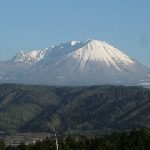
Mt. Daisen is an independent volcano and the highest mountain in the Chugoku region, which is also known as ” Hokifuji: Mt. Fuji in Hoki Province, for its shape looks like Mt. Fuji”. However, the north rock surface of the 2km folding screen type rock face, which formed a steep cliff by a small explosion, erosion and collapse, is rough and masculine.
It was recorded as “Mt. Okami no take” or ” Mt. Hinokami no take” in the Izumo Province Fudoki (description of Japanese regional climate, culture, and others) compiled during the Nara period (710 – 794), and has a history that has been worshiped since ancient times.
The special natural monument Daisen-Carabok grows near the top of the mountain and Mt. Daisen is a treasure trove of Alpine plants and wild birds.
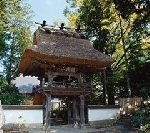
This temple is located 500 meters from Kinrinko Lake and is the main guardian deity of Mt. Yufudake. The Torii, a gateway at the entrance to a Shrine, floats on Kinrinko Lake and belongs to this temple, although it was moved by Haibutsu Kishaku (abolish Buddhism), the event triggered by the official policy of the separation of Shinto and Buddhism. This caused great damage to Buddhism in Japan after the Meiji Restoration in 1868, when the government sectored practical imperial rule of the Empire of Japan in 1868 under Emperor Meiji.
This temple started by Shoku Shonin (910 – 1007), a priest of the Sendai sect, who had a hermitage on the mid-slope of Mt. Yufudake, thousands of years ago. This temple moved here from the mid-slope by the earthquake in the Keicho era (1596 – 1615) of the Edo period (1603 – 1868).
In the early morning of every weekend, Zazenkai, a practice of Zen Meditation, and Shakeikai, a gathering of hand-copied sutras, are held for anyone to participate.
